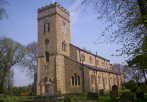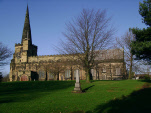The LEWTAS Families

JULY 2024
Although in the 21st century the name LEWTAS is found across the world, evidence suggests it originated on the border of Lancashire and Cheshire where it is first recorded in 1324. Searches show marked clustering of the name Lewtas/Latewyse and its variations in the Fylde up to the mid nineteenth century. Research shows that all present day Lewtas names can be traced back to this area of Lancashire.
WHERE DID THE NAME BEGIN?
The name seems to have originated in south Lancashire - to market towns and to county courts and to fairs and elsewhere in that county, against
the king's peace and to the terror of the people." In 1323 Edward II visited Lancashire
in an attempt
to market towns and to county courts and to fairs and elsewhere in that county, against
the king's peace and to the terror of the people." In 1323 Edward II visited Lancashire
in an attempt

THE EARLIEST CHURCH RECORDS -
The Winwick baptismal registers began in 1563. The registers list the baptism of
two children of John Latwy(i)sse appear on September 13th 1564 and May 7th 1567.
(Unfortunately the children's names are unreadable) . Wills can be valuable in providing
details of families. The first will is that of Robert Latwise of Winwick proved in
1578. Next is that of William Latewise of Culcheth 1604. One of those preparing his
inventory in 1608 was John Sterrope; this may have been William's future son-
HOW THE NAME CHANGED -
Lewtas or Latus is a shortened form of the name Latewysse, and similar spellings.
The earliest references to the more modern form 'Lewtas' are found in wills which
also bear the name Latewise or even Latehouse. These names -
Matthew
Letus buried in Goosnargh on December 11th 1624 is recorded as being the son of William
Leatwyse; the inventory of George Lewtas of Out Rawcliffe, buried on June 22nd 1675
in Stalmine registers names the deceased as ''George Latehouse' John Lewty's will
has Lewtas on the outside and Lewty on the inventory heading. The IGI shows several
LEWKAS families -
The Hearth Tax returns of 1663 and 1673 give even more variations
on the spelling: Ralph Laytus in Myerscough; Edmund Leuty & John Leuty in Lea; Ralph
Lattuss in Inskip with Sowerby; Andrew Leutuss in Weeton with Preese -
Other spellings found in Fylde
registers are Lewtes, Lewtis, Leautis, Lattwys and Latos. The families appear all
round the Fylde -

THE MOVE TO THE FYLDE
A rough survey of the place of residence named in the parish registers of the Fylde area in which instances of the name appear suggest that the families were firstly in Goosnargh, Plumpton, Wood Plumpton, Kirkham, Inskip, Lea and Eaves in the late 1500s and early 1600s onwards.
They appear to have spread into Garstang, Poulton, Out Rawcliffe and St Michaels by the mid to late 1600s and to Freckleton, Hambleton, Stalmine by the mid 1700s. Liverpool had attracted them from the 1700s and Manchester from the 1800s..
Please email whitlew2@btinternet.com and mc.storey@btinternet.com for more information
Newchurch Culcheth
St Oswald Winwick